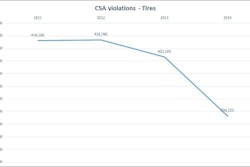How do you lead in your business?
Are you a ‘first one in, last one out’ jack of all trades who leads by example? Or are you more of a coach? Always teaching, instructing and encouraging your people.
Maybe you’re neither. Maybe you’re more a delegator. You train your people to do their jobs and then stand back and let them do it.
In my time in the aftermarket I’ve learned there’s no right or wrong method. Every leader and business environment is different, and finding the right leadership style for yourself takes a lot more than buying the first leadership book in the Amazon search queue and picking one method described within its pages.
A good leader perfects their craft over time. Taking what they know about themselves and their people, good leaders are able to develop strategies that capitalize on their strengths and minimize their weaknesses to best communicate and motivate their team.
That last bit is important. Good leaders always remain focused on their team.
While at the VIPAR Heavy Duty Annual Business Conference last month in Orlando, I had the good fortune of sitting in on a presentation from John Egan of the American Management Association on exactly this topic.
Speaking to a group of up-and-coming leaders within the VIPAR Heavy Duty community, Egan says the path to sustained, repeatable leadership success is to never turn your attention away from your people.
“The strength of a leader is measured by the strength of a team,” he says, and a good leader never forgets about PEOPLE.
Though in Egan’s case, PEOPLE means more than just your employees. It is a path to leadership success.
Built on six core values: Professionalism; Empathy; Optimism; Partnership; Loyalty and Empowerment; Egan says the PEOPLE path to leadership success allows leaders to strike a balance between relationship-focused and outcomes focused management.
Egan says PEOPLE can be adapted into any business and workplace environment, and listening to him describe it I would agree.
The PEOPLE path doesn’t fundamentally change your leadership style—or at least it shouldn’t, if you’re already succeeding as a leader—it just calls attention to specific aspects of leadership where you should be cognizant of how your actions impact the people you’re trying to lead.
Just take a look at those core values. It’s pretty easy to see that how you handle each one would impact your employees.
Egan calls out Partnership, specifically, as the most important step in the path because it’s the one where you can do the most to change your employee’s attitudes toward you and your business.
For example, being an empathic and optimistic leader are necessary skills. No one wants to work for a callous pessimist, and if that’s how you come off toward employees you won’t be their employer for long. But it’s likely they won’t stick around solely because you’re a good, caring person, either. That’s common decency. It’s expected as the norm.
Partnership isn’t viewed through quite the same lens.
Leaders who develop and maintain a culture of teamwork and collaboration aren’t just accepted, they are adored. Partnership, more than any other aspect of the PEOPLE path, is an area where your actions can positively shift an employee’s opinion of you and your business.
Egan says Partnership drives engagement, and engagement drives business success.
Employees who feel “their suggestions are considered are the most willing to take on new challenges” and grow with your business, he says. “They feel like they are part of it.” As they should be. Because no matter how smart you are, you’re not doing everything alone.
And if you think you are, then you’re not a leader after all.










